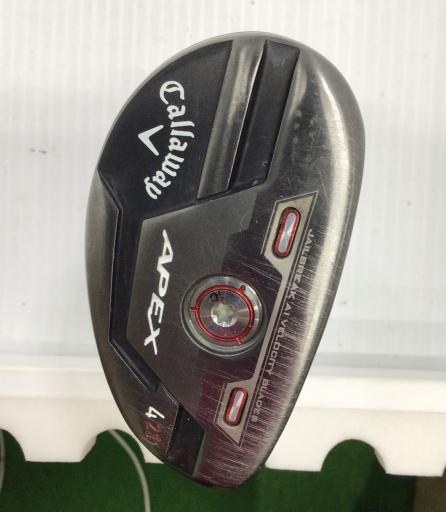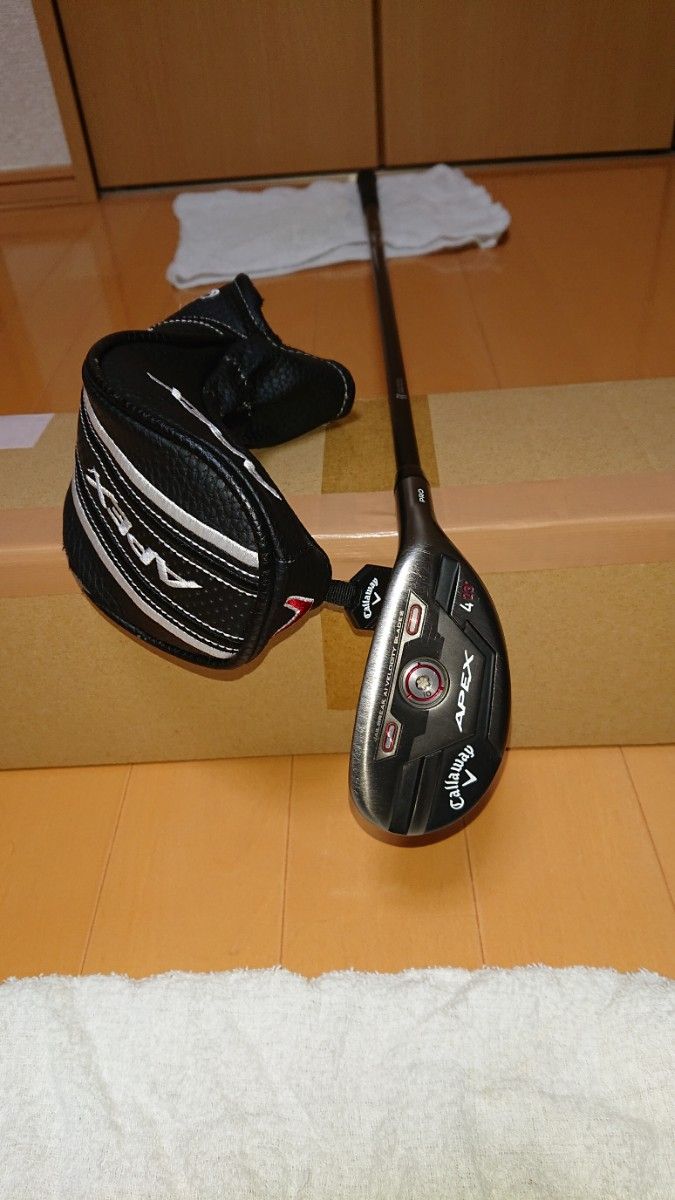キャロウェイAPEX PRO(2021) U4
(税込) 送料込み
商品の説明
クラブ種別 ユーティリティ 状態(総合ランク)
ランクについてB 番手 4U 傷状態 ヘッド上部 B シャフト NS PRO 950GH neo ヘッド下部 B メーカーフレックス S フェース B フレックス S シャフト B 発売時クラブセット組合せ内容 グリップ オリジナル 良好 本商品クラブセット組合せ内容 ヘッドカバー 純正品(普通) クラブセット実本数 0 年式 2021 メーカーカタログ情報 お店からのコメント/商品状態
| ヘッドロフト角(°) | 23.00 | クラブ重量(g) | 389.00 |
|---|---|---|---|
| ヘッドライ角(°) | 58.00 | 利き手 | スタンダード |
| ヘッド体積(cc) | 98 | シャフト長(インチ) | 39.000 |
| 性別 | メンズ |
※メーカーカタログ情報のため、実商品と異なる場合がございます。
12870円キャロウェイAPEX PRO(2021) U4ユーティリティ中古】APEX PRO(2021) ユーティリティ Fujikura MC 80 for Callaway 23
中古 キャロウェイ APEX PRO(2021) ユーティリティ 中古
キャロウェイ Callaway エーペックス ユーティリティ PRO(2021) APEX
キャロウェイ Callaway エーペックス ユーティリティ PRO(2021) APEX

中古 キャロウェイ APEX PRO(2021) ユーティリティ 中古
中古 キャロウェイ APEX PRO 2021 ユーティリティ U4 S Fujikura MC 80

中古 キャロウェイ APEX PRO(2021) ユーティリティ 中古

中古 キャロウェイ APEX PRO(2021) ユーティリティ 中古

Amazon | 【中古】キャロウェイゴルフ APEX APEX PRO(2021
キャロウェイ Callaway エーペックス ユーティリティ PRO(2021) APEX

中古 キャロウェイ APEX PRO(2021) ユーティリティ 中古

キャロウェイ APEX PRO 23° U4 2021年 MMT 80 HB Mitsubishi frex-S-
キャロウェイ Callaway エーペックス ユーティリティ PRO(2021) APEX

中古 キャロウェイ APEX PRO(2021) ユーティリティ 中古

APEXユーティリティ | ユーティリティ | クラブ | キャロウェイゴルフ

中古 キャロウェイ APEX PRO(2021) ユーティリティ 中古
キャロウェイ Callaway エーペックス ユーティリティ PRO(2021) APEX

中古】APEX PRO(2021) ユーティリティ N.S.PRO 950GH neo 23 S BC

中古】APEX PRO(2021) ユーティリティ Fujikura MC 80 for Callaway 23

中古 キャロウェイ APEX PRO(2021) ユーティリティ 中古

UT キャロウェイ APEX 2021 21度 flex:SR Diamana 55 メンズ右 即決価格-

コーフル APEX(キャロウェイゴルフ) キャロウェイ Callaway

APEX PROユーティリティ | ユーティリティ | クラブ | キャロウェイ

最新作正規品】 中古 Cランク (フレックスS) キャロウェイ APEX(2021

100%の保証 キャロウェイ レンチなし R CW for 55 Diamana 4H(21

キャロウェイ APEX PRO 23° U4 2021年 MMT 80 HB Mitsubishi frex-S-

中古 キャロウェイ APEX PRO(2021) ユーティリティ 中古

新品未使用 セレクトストア限定 キャロウェイ APEX PRO (2021) U4 23

楽天市場】【中古】キャロウェイゴルフ APEX APEX UT(2021

キャロウェイAPEXユーティリティ(2021)U4 22度 福袋 www.geyrerhof.com

APEXユーティリティ | ユーティリティ | クラブ | キャロウェイゴルフ

☆キャロウェイ 2021 APEX ユーティリティ U4 ,U5☆ 【税込】 14700円

05】【UT】【即決価格】キャロウェイ APEX(2021)/4H(21度)/Diamana 55

キャロウェイ APEX PRO ユーティリティ NS.PRO 950GH NEO-

楽天市場】中古 Cランク (フレックスS) キャロウェイ APEX(2021) U4

UT キャロウェイ APEX 2021 21度 flex:SR Diamana 55 メンズ右 即決価格-

中古 キャロウェイ APEX PRO(2021) ユーティリティ 中古

Amazon | 【中古】キャロウェイゴルフ APEX APEX PRO(2021

05】【UT】【即決価格】キャロウェイ APEX(2021)/4H(21度)/Diamana 55

APEX ユーティリティ U3 U4 U5 - 通販 - pinehotel.info

APEX PROユーティリティ | ユーティリティ | クラブ | キャロウェイ






商品の情報
メルカリ安心への取り組み
お金は事務局に支払われ、評価後に振り込まれます
出品者
スピード発送
この出品者は平均24時間以内に発送しています














